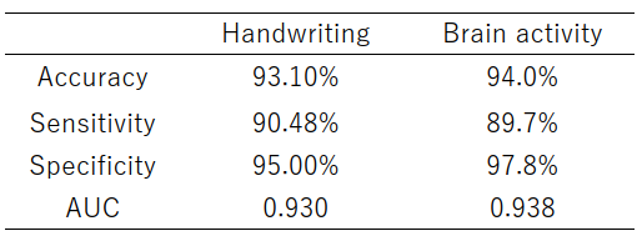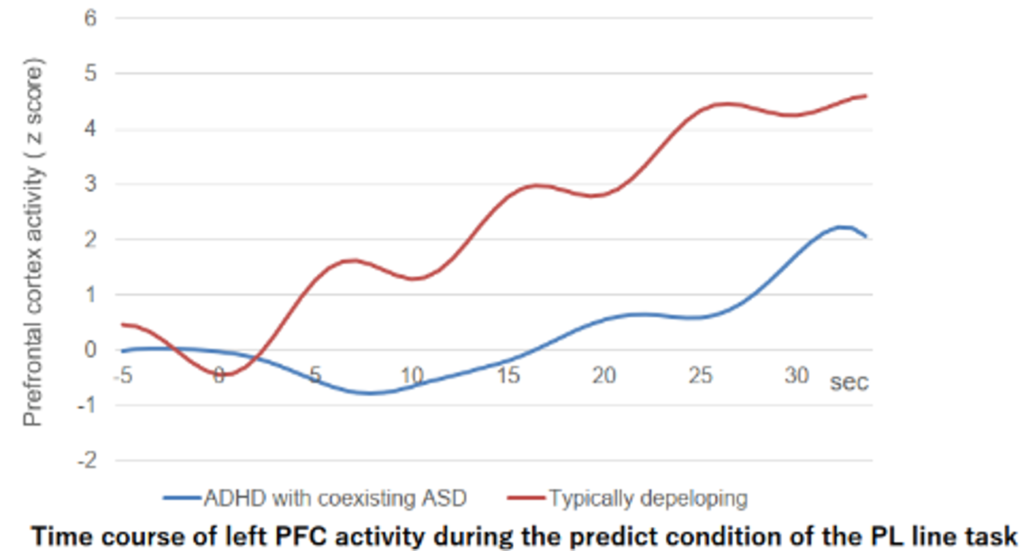Advantages
- Determination based on objective numerical values.
- Determination can be made from the early developmental stage (infancy) when children cannot yet understand letters, allowing appropriate intervention to begin early.
Current Stage and Key Data
- Human clinical research stage.
- Based on handwriting and brain activity information, ADHD children with coexisting ASD could be distinguished from typically developing children.
 |
Partnering Model
We are currently looking for collaborative partner companies as follows:
- Digital health companies that will develop, sell, and provide services for the system under license.
- Pharmaceutical/biotech companies that will use this system to develop drugs to treat ADHD/ASD.
- Collaborating companies that will develop and provide the equipment (fNIR, etc.) that makes up the system.
Background and Technology
Conventional diagnosis of developmental disorders is subjective based on observation and interview in daily life, and reliability is an issue. Research has been conducted to utilize the combination of colors and letters and handwriting characteristics of test children for diagnosis. However, since the target age is 5 years or older, appropriate diagnosis and intervention may be delayed, and there is concern that secondary disorders such as school refusal and depression may occur.
We have developed a method to determine ADHD/ASD by having test children write specific repetitive figures with a pen tablet, obtaining objective numerical values of writing dynamics. Furthermore, we have improved the method to determine ADHD/ASD by combining data measured by frontal lobe activity during writing (fNIRS: functional near-infrared spectroscopy). This method can be applied to early developmental children who cannot understand colors or letters.
 |
 |
Principal Investigator
Akira YASUMURA (Faculty of Humanities and Social Sciences, Kumamoto University)
Reference
- Shin, J. et al., IEEE Access, 2023, 11, p. 84974-84984
- Shin, J. et al., IEEE Access, 2023, 11, p. 82794-82801
- Megumi, A. et al., Psych 2023, 5, p. 896–907
Project No.BK-04493


